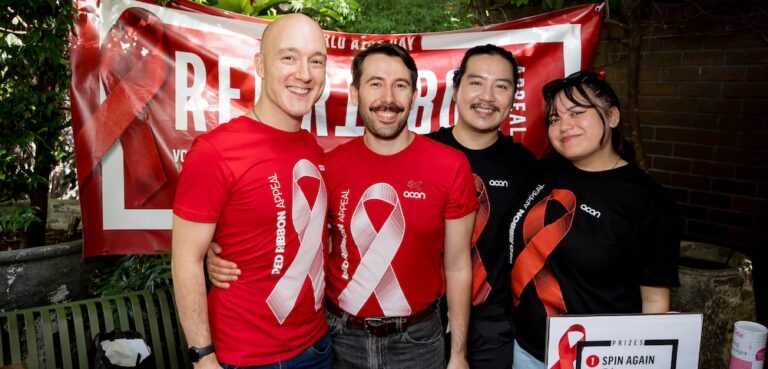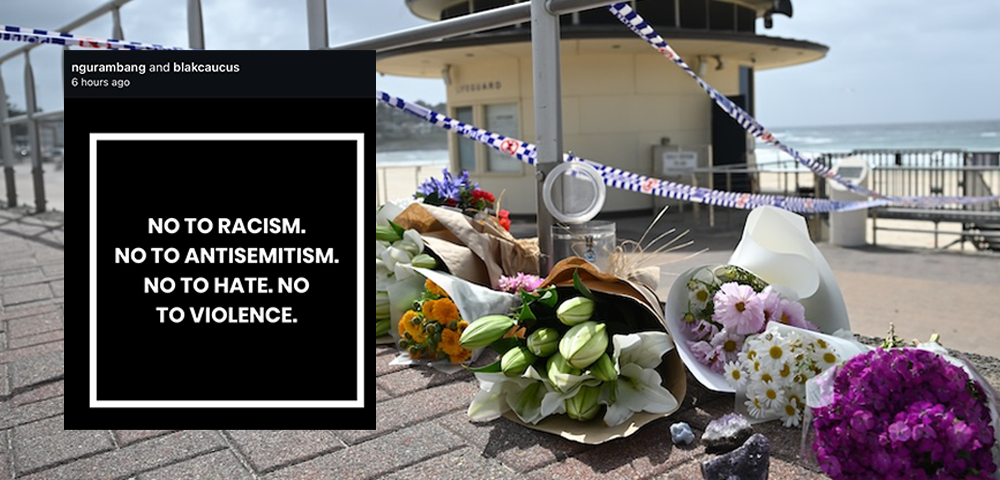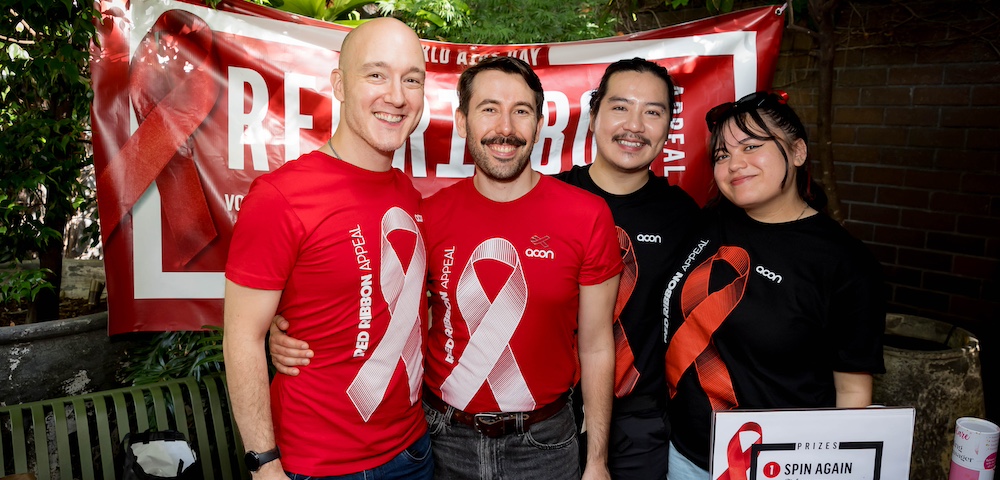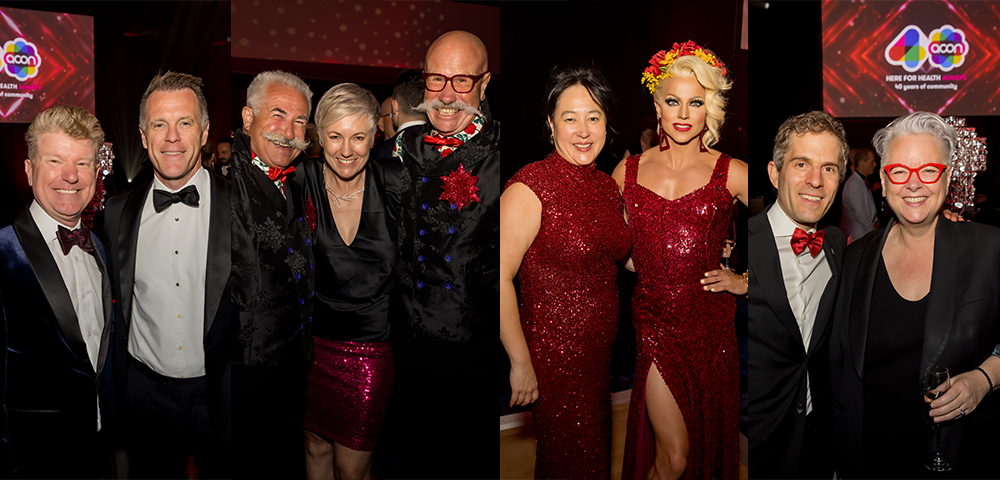
The risks of GHB: how you can avoid the ‘drop’

Kane Race has had too many friends die from GHB (Gamma Hydroxybutyrate) overdoses in the past five years.
No stranger to the often taboo subject of drug use in the LGBTI community thanks to his work as an Associate Professor at The University of Sydney’s Department of Gender and Cultural Studies, Race attributes this to many of the changes in Sydney and the LGBTI community over the past 10 years.
He believes the introduction of drug detector dog and lock-out laws in Sydney, and the rise of digital hook up apps and cruising sites, means ‘partying’ in social spaces has become increasingly unattractive to people.
“People don’t want to be caught with drugs, and get that mark on their record and destroy their employment opportunities, and so on,” he said.
“A lot of partying has moved indoors. If someone asks, ‘are you partying?’ it often means are you going to be at home having sex with more than one person.”
With partying in private spaces becoming more popular, new challenges have arisen in terms of providing information and health responses.
ACON’s Sarah Lambert added that one of the real dangers of G is that people tend to use it while in party-mode and don’t regard it with the same seriousness as they do other substances.
“What we see with G is people have quite adverse effects that take hold quite quickly,” she said.
“When someone was intoxicated or taken multiple doses over a day of partying, they’re not thinking through the risks or able to identify when they’re having warning signs of physiological distress or potentially overdosing.
“We talk about ‘G drops’ – which is when people pass out. There are quite subtle warning signs that occur prior to dropping. When people are having a good time, they might not realise they or someone around them is experiencing difficult, or think to take preventative measures.”
Some of the subtle signs include looking drowsy, slow dance movements, lack of responsiveness, confusion, irregular breathing but also euphoria or over-excitement.
G can also be dangerous thanks to inconsistent potency and dosages, and the fine line between a dose that has the desired effect versus an overdose.
“[G can be] fairly innocuous in small doses but too big a dose can result in the user falling asleep, sometimes going into a coma and sometimes even death.”
Race dismissed the idea that a particular drug is essentially good or bad.
Dr Nadine Ezard, the clinical director of the Alcohol and Drug service at St Vincent’s Hospital, was also hesitant to name any drug more dangerous than another.
“Cigarettes are still killing people and alcohol is the most dangerous drug in terms of the language and the amount we’re using,” Dr Ezard says.
In terms of commentary around drug use, there is a lot of attention focused on crystal methamphetamine, while other types of drugs are less prominent in community conversation.
“We talk about crystal meth but not as much about G or dispelling myths around it.
“A lot of people aren’t aware of the potential dangers [of G], a lot think its a stimulant and aren’t aware of some of the problems associated with it. I think there’s a lot of misinformation.”
Race said the problem of misinformation could be attributed to the fact that people in the LGBTI community generally learn how to use drugs from their friends.
Another potential issue that is often related to G use is consent in sexual spaces. With any situation where alcohol, drugs and sex are in the mix, there is the potential for less clarity about boundaries and explicit consent.
Race warns readers to always watch how much G people are putting in your drink.
Lambert suggests that it is important for people to know how to keep themselves and their partners safe in these situations – including paying attention to doses and timeframes.
Dr Ezard said people who frequently use G also become tolerant to the idea of an overdose. Many users experience frequent small overdoses, but don’t realise the oxygen in your blood might go down, potentially resulting in not enough oxygen flowing to your brain causing cognitive brain damage.
When it comes to G, it’s not just about being in the moment at the party – it is also about regularity.
There is also a risk of becoming dependent on G if you use it too often. Also, withdrawals from ongoing G use can be life-threatening, Dr Ezard said.
ACON has been having conversations with community about G since it first became popular in Sydney in the early 90s with some well-known campaigns like ‘Avoid the Drop Zone’ and ‘You’re a Mate, Not a Doctor’ being run over the past two decades.
Also, ACON’s Rovers are a well known and loved team of volunteers who provide support and information at major LGBTI parties and events to make sure partygoers are kept safe.
The idea for the Rovers originated after ACON partnered with Mardi Gras and identified G as an important topic to tackle.
“The Rover Program uses community volunteers who understand the context in which people use, and are skilled at engaging with patrons in a non-confronting way. Rover know over the course of a party when people are more likely to present with warning signs and so they check in on people, and if need be, get help.
Lambert says the most beautiful thing about the Rovers program comes from the trust developed with the patrons,
“People might be hesitant interacting with Medical, but they know the Rovers look after them all through the party, handing out water, making sure the people who might be overheating take breaks – all sorts of good things that help people stay safe and enjoy themselves.”
Although ACON’s substance abuse program rarely sees people whose main issue is GHB, Lambert says there is still a need to promote appropriate health messages on this issue.
“As a community based health organisation, our job is the provide advice about safety and reducing risk in a way that incorporates the reality of what is happening in the community.
“ACON knows that if we equip our community with information, they are good at taking care of each other.
“It’s fair to say our communities utilise information available to them. There is a culture of care for one another as seen through programs like the Rovers,” she added.
‘GHB SAFETY GUIDE TIPS’
- No more than one mL per hour and consider using less with each subsequent dose. Don’t mix G with alcohols, sleepers, or antihistamines.
- If you haven’t eaten or are fatigued, G is going to affect you more.
- Support each other to make sure you don’t dose too often, consider using a time alarm on your phone or make a note to space out your doses.
- When someone ‘G-drops’, check that they are breathing and in a safe space. If in any doubt, call 000 – especially if alcohol is involved. The ambulance isn’t interested in getting police involved.
- Remember: you’re a mate, not a doctor.










